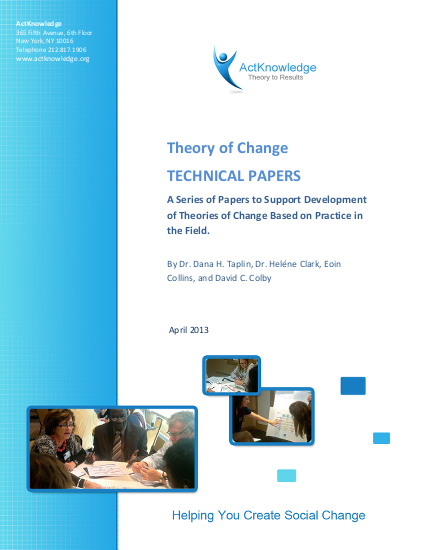
At its heart, Theory of Change spells out initiative or program logic. It defines long-term goals and then maps backward to identify changes that need to happen earlier (preconditions). The identified changes are mapped graphically in causal pathways of outcomes, showing each outcome in logical relationship to all the others. Interventions, which are activities and outputs of any sort, are mapped to the outcomes pathway to show what stakeholders think it will take to effect the changes, and when. Theory of Change provides a working model against which to test hypotheses and assumptions about what actions will best bring about the intended outcomes. A given Theory of Change also identifies measurable indicators of success as a roadmap to monitoring and evaluation. Theory of Change is both process and product: the process of working out the theory, mainly in group sessions of practitioners and stakeholders led by a capable facilitator; and, as the product of that process, a document of the change model showing how and why a goal will be reached. There is a good deal of discussion as to which provides more value—the group process of reflecting on the work, surfacing assumptions, creating transparency and building consensus; or the product, a sound and complete plan with plausible potential for producing the change desired.